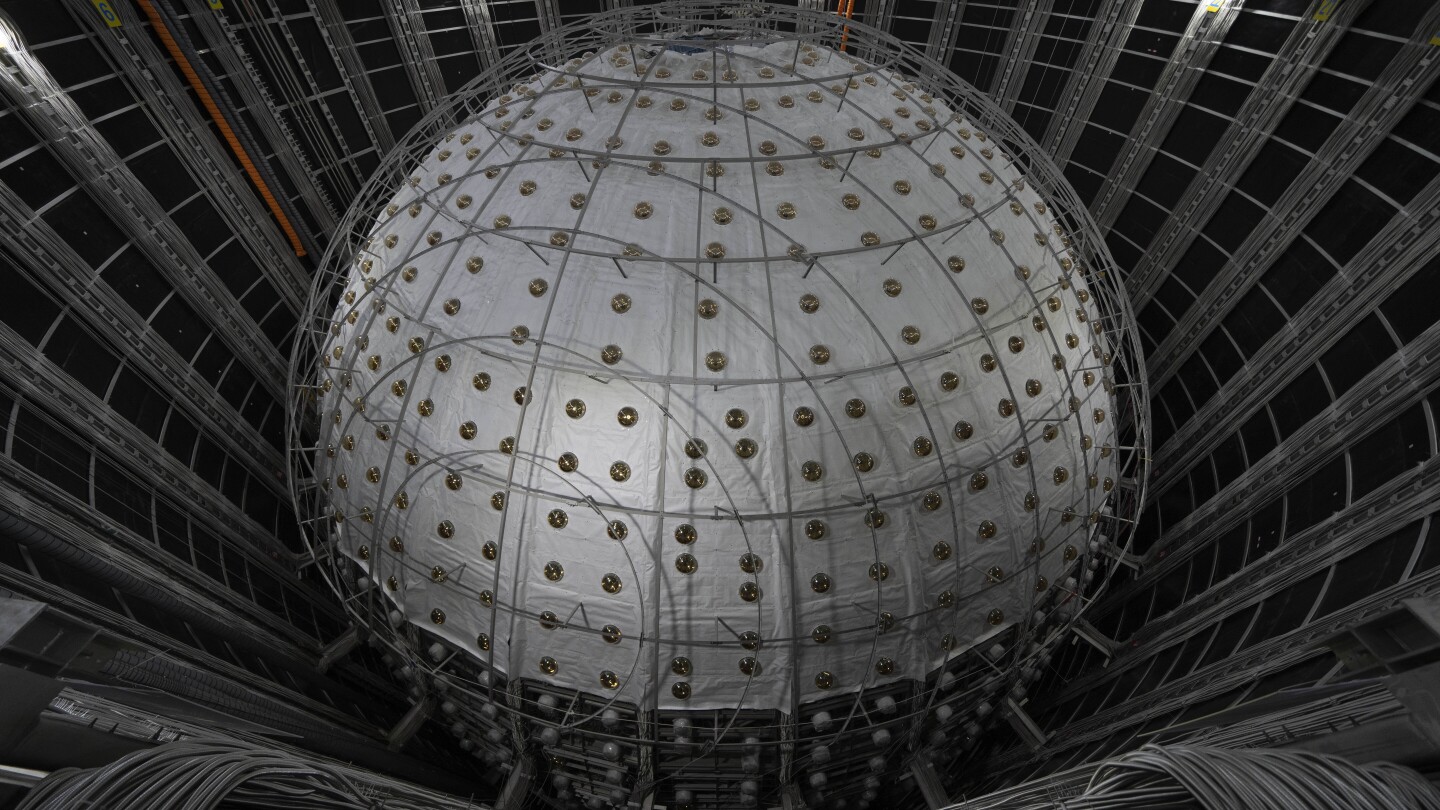Science
A new neutrino detector in China aims to spot mysterious ghost particles lurking around us

Unveiling the Mysteries of Ghost Particles: The Jiangmen Underground Neutrino Observatory
Introduction to the Project
Deep beneath a granite hill in Kaiping, China, a groundbreaking scientific endeavor is nearing completion. The Jiangmen Underground Neutrino Observatory (JUNO) is a state-of-the-art detector designed to uncover the secrets of neutrinos, the elusive "ghost particles" that have fascinated scientists for decades. Neutrinos are incredibly small, nearly massless particles that zip through space, interacting rarely with other matter. Despite their tiny size, they hold immense significance for understanding the universe’s origins and evolution. JUNO, set to begin operations next year, is part of a global effort to study these enigmatic particles in unprecedented detail. Alongside similar detectors in the United States and Japan, JUNO will push the boundaries of scientific knowledge, offering a glimpse into the unseen workings of the cosmos.
What Are Neutrinos?
Neutrinos are among the most mysterious particles in the universe, with a history dating back to the Big Bang. Billions of these particles pass through our bodies every second, yet they remain largely misunderstood. They are produced in vast quantities by stars, including our Sun, and are emitted during high-energy processes like particle collisions. Scientists have known about neutrinos for nearly a century, but their true nature—and their role in the universe—remains a puzzle. "It’s the least understood particle in our world," said Cao Jun, a key figure in managing the JUNO project. This lack of understanding has driven researchers to build massive detectors like JUNO to study neutrinos in greater detail.
The Challenge of Detecting Neutrinos
Detecting neutrinos is no easy task. Because they interact so rarely with other matter, scientists cannot observe them directly. Instead, they rely on indirect methods, measuring the effects of neutrino collisions with other particles. These collisions produce faint flashes of light or charged particles, which scientists then analyze. To increase the chances of detecting these rare events, researchers have turned to building enormous detectors. "The solution for how we measure these neutrinos is to build very, very big detectors," explained Andre de Gouvea, a theoretical physicist at Northwestern University.
China’s Ambitious Neutrino Detector
The JUNO detector, nestled 700 meters underground in Kaiping, China, is a testament to human ingenuity and scientific ambition. This $300 million project has taken over nine years to complete and represents a major milestone in neutrino research. Its underground location shields it from cosmic rays and radiation, which could interfere with its sensitive instruments. Once operational, the detector will be filled with a specialized liquid that emits light when neutrinos pass through, submerged in purified water to enhance its Performance. JUNO will focus on studying antineutrinos—particles opposite to neutrinos—emitted by two nearby nuclear power plants. By analyzing these antineutrinos, scientists hope to uncover one of the biggest mysteries surrounding neutrinos: their ability to switch between three "flavors" as they travel through space.
A Global Collaboration for Scientific Discovery
JUNO is not the only neutrino detector in development. Similar projects, such as Japan’s Hyper-Kamiokande and the Deep Underground Neutrino Experiment in the United States, are underway, with completion dates set for 2027 and 2031, respectively. These detectors will employ different approaches to studying neutrinos, allowing scientists to cross-check findings and validate results. "In the end, we’ll have a better understanding of the nature of physics," said Wang Yifang, JUNO’s chief scientist. While JUNO is expected to begin operations next year, it will take time to collect and analyze the data. But the potential payoff is immense—answers to some of the universe’s most enduring questions.
Neutrinos and the Universe’s Biggest Mysteries
Despite their elusive nature, neutrinos hold the key to understanding some of the universe’s most profound mysteries. These particles have been present since the Big Bang, offering a window into the cosmos’s earliest moments. One of the biggest questions they may help answer is why the universe is dominated by matter rather than antimatter. Scientists believe neutrinos may have played a role in creating this imbalance, but the proof lies in their behavior. By studying neutrinos, researchers hope to unravel the universe’s evolution and expansion. "They’re part of the big picture," said Kate Scholberg, a physicist at Duke University. As JUNO and other detectors begin their work, humanity stands on the brink of a new era of scientific discovery—one that could revolutionize our understanding of the cosmos and our place within it.